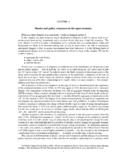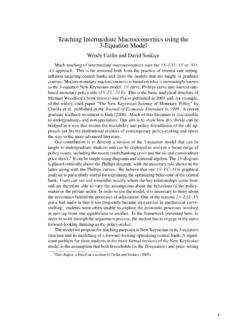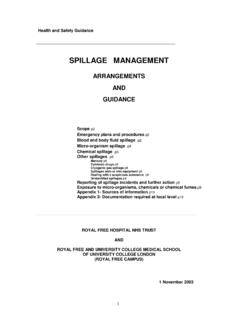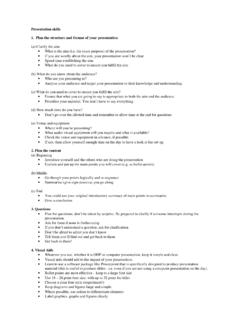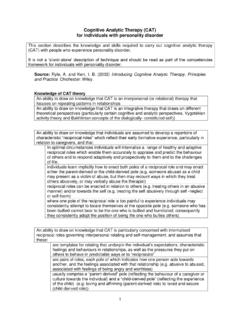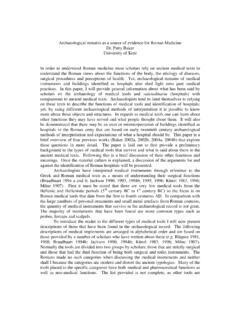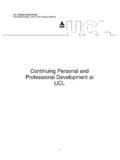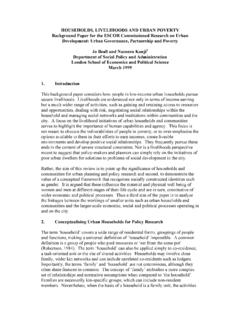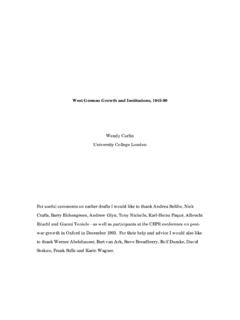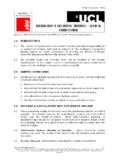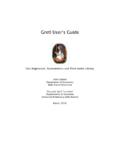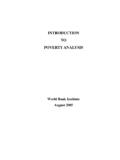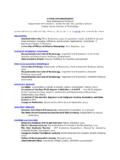Transcription of Alternative Approaches to Evaluation in Empirical ...
1 Alternative Approaches to Evaluation in Empirical MicroeconomicsRichard Blundell and Monica Costa DiasInstitute for Fiscal StudiesDecember 2007 AbstractThis paper reviews a range of the most popular policy Evaluation methods in Empirical microe-conomics: social experiments, natural experiments, matching methods , instrumental variables,discontinuity design and control functions. It discusses the identification of both the tradition-ally used average parameters and the more demanding distributional parameters. In each case,the necessary assumptions and the data requirements are considered. The adequacy of each ap-proach is discussed drawing on the Empirical evidence from the education and labor market policyevaluation : Evaluation methods , policy Evaluation , matching methods , instrumental variables, so-cial experiments, natural experiments, difference-in-differences, discontinuity design, control Classification: J21, J64, :We would like to thank the editor and referees as well as graduate studentsand researchers at UCL and IFS for their helpful comments.
2 This research is part of the programmeof work at the ESRC Centre for the Microeconomic Analysis of Public Policy at the Institute forFiscal Studies. We would like to thank the ESRC for financial support. The usual disclaimerapplies. Address: University College London and Institute for Fiscal Studies, 7 Ridgemount Street, London, WC1E Introduction12 Which Treatment Parameter? Average Treatment Effects .. The selection problem and the assignment rule .. A running Evaluation example: returns to education .. Homogeneous treatment effects .. Heterogeneous treatment effects .. 133 Social Random assignment .. Recovering the average return to education .. 164 Natural The difference-in-differences (DID) estimator .. A DID Application: The New Deal Gateway in the UK .. Weaknesses of DID.
3 Selection on idiosyncratic temporary shocks: Ashenfelter s dip .. Differential macro trends .. DID with Repeated Cross-sections: compositional changes .. Non-linear DID models .. Using DID to estimate returns to education .. Monte-Carlo results .. 325 Matching The matching estimator (M) .. Propensity score matching .. The linear regression model and the matching estimator .. Weaknesses of matching .. Using matching to estimate the returns to education .. Monte-Carlo results .. Combining matching and DID (MDID) .. 496 Instrumental The instrumental variables (IV) estimator .. Weaknesses of IV .. The LATE parameter .. The LATE assumptions .. What does LATE measure? .. The Marginal Treatment Effect .. Using IV to estimate the returns to education.
4 657 Discontinuity The discontinuity design estimator (DD) .. The sharp design .. The fuzzy design .. The link between discontinuity design and IV .. Weaknesses of discontinuity design .. Using discontinuity design to estimate the returns to education .. 768 Control Function The Control Function Estimator (CF) .. Weaknesses of the control function method .. The link between the control function and the instrumental variables approach .. Using the control function approach to estimate the returns to education .. 849 Summary8631 IntroductionThe aim of this paper is to examine Alternative Evaluation methods in microeconomic policy analysisand to lay out the assumptions on which they rest within a common framework. The focus ison application to the Evaluation of policy interventions associated with welfare programs, trainingprograms, wage subsidy programs and tax-credit programs.
5 At the heart of this kind of policyevaluation is a missing data problem. An individual may either be subject to the intervention or maynot, but no one individual can be in both states simultaneously. Indeed, there would be no evaluationproblem of the type discussed here if we could observe the counterfactual outcome for those in theprogramme had they not participated. Constructing this counterfactual in a convincing way is a keyingredient of any serious Evaluation choice of Evaluation method will depend on three broad concerns: the nature of the questionto be answered; the type and quality of data available; and the mechanism by which individuals areallocated to the program or receive the policy. The last of these is typically labeled the assignmentrule and will be a key component in the analysis we present. In a perfectly designed social experiment,assignment is random.
6 In a structural microeconomic model, assignment is assumed to obey somerules from economic theory. Alternative methods exploit different assumptions concerning assignmentand differ according to the type of assumption made. Unless there is a convincing case for thereliability of the assignment mechanism being used, the results of the Evaluation are unlikely toconvince the thoughtful skeptic. Just as an experiment needs to be carefully designed, a structuraleconomic model needs to be carefully this review we consider six distinct, but related, Approaches : (i) social experiment methods , (ii)natural experiment methods , (iii) discontinuity design methods , (iv) matching methods , (v) instru-mental variable methods and (vi) control function methods . The first of these Approaches is closest tothe theory free method of a clinical trial, relying on the availability of a randomized assignment control function approach is closest to the structural econometric approach, directly modelingthe assignment rule in order to fully control for selection in observational other methods1 The examination of fully specified structural Evaluation models is beyond the scope of this review but for manyimportant ex-ante policy evaluations they are the dominant approach; see Blundell and MaCurdy (1999) for someexamples in the Evaluation of tax and welfare policy be thought of lying somewhere in between often attempting to mimic the randomized assignmentof the experimental setting but doing so with non-experimental data.
7 Natural experiments exploitrandomization to programs created through some naturally occurring event external to the design methods exploit natural discontinuities in the rules used to assign individualsto treatment. Matching attempts to reproduce the treatment group among the non-treated, this wayre-establishing the experimental conditions in a non-experimental setting, but relies on observablevariables to account for selection. The instrumental variable approach is a step closer to the struc-tural method, relying on exclusion restrictions to achieve identification. Exactly what parameters ofinterest, if any, can be recovered by each method will typically relate to the specific environment inwhich the policy or programme is being many ways thesocial experiment methodis the most convincing method of Evaluation sinceit directly constructs a control (or comparison) group which is a randomized subset of the eligi-ble population.
8 The advantages of experimental data are discussed in papers by Bassi (1983,1984)and Hausman and Wise (1985) and were based on earlier statistical experimental developments (seeCockrane and Rubin (1973) and Fisher (1951), for example). Although a properly designed socialexperiment can overcome the missing data problem, in economic evaluations it is frequently difficultto ensure that the experimental conditions have been met. Since programs are typically voluntary,those individuals randomized in may decide not to participate in the treatment. The measured pro-gram impact will therefore recover an intention to treat parameter, rather than the actual treatmenteffect. Further, unlike in many clinical trials, it is not possible to offer the control group a placebo ineconomic policy evaluations. Consequently individuals who enter a program and then are random-ized out may suffer a disappointment effect and alter their behavior.
9 Nonetheless, well designedexperiments have much to offer in enhancing our knowledge of the possible impact of policy , a comparison of results from non-experimental data can help assess appropriate methodswhere experimental data is not available. For example, the important studies by LaLonde (1986),Heckman, Ichimura and Todd (1998) and Heckman, Smith and Clements (1997) use experimentaldata to assess the reliability of comparison groups used in the Evaluation of training programmes. Anexample of a well conducted social experiment is the Canadian Self Sufficiency Project (SSP) which2was designed to measure the earnings and employment responses of single mothers on welfare to atime-limited earned income tax credit programme. This study produced invaluable evidence on theeffectiveness of financial incentives in inducing welfare recipients into work (see Card and Robbins,1998).
10 We draw on the results of this, and other experimental studies, experiment approachattempts to find a naturally occurring comparison group that canmimic the properties of the control group in the properly designed experiment. This method is alsooften labeled difference-in-differences since it is usually implemented by comparing the difference inaverage behavior before and after the reform for the eligible group with the before and after contrastfor a comparison group. This approach can be a powerful tool in measuring the average effect ofthe treatment on the treated. It does this by removing unobservable individual effects and commonmacro effects by relying on two critically important identifying assumptions of (i)common time effectsacross groups, and (ii)no systematic composition changes within each group. The Evaluation of the New Deal for the Young Unemployed in the UK is a good example of a policy design suited tothis approach.
